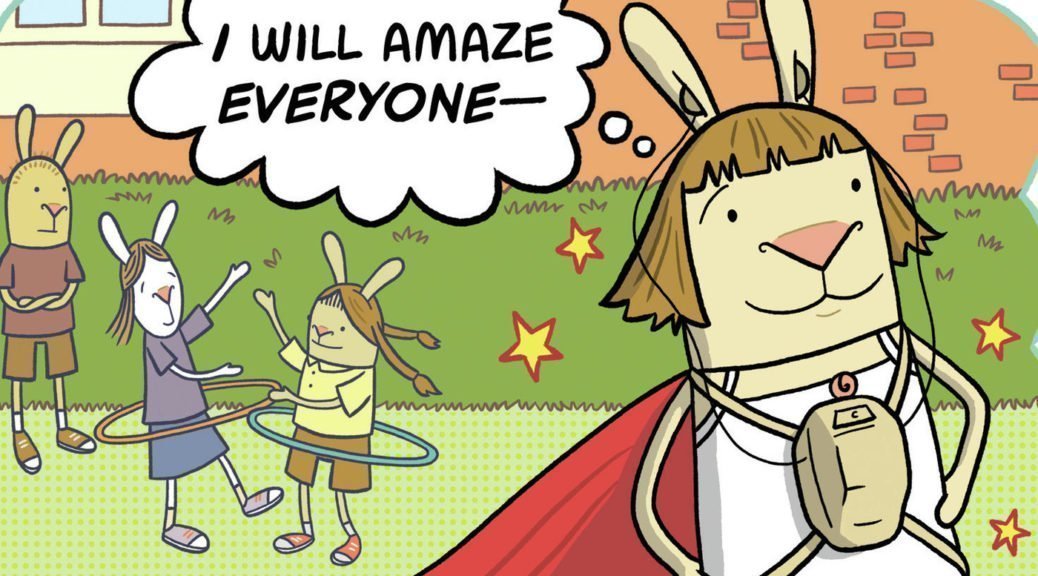
Blog 6: Graphic Novels
Drego Little promotes the usefulness of reading graphic novels and comics in his article titled, “Can the X-men Make You Smarter.” He reflects on his own experience of reading comics as well as introducing his son to this genre and what he’s noticed. His son was having trouble moving on from short picture books to short novels and was concerned that he wouldn’t continue to love reading or have interest in finishing a longer book. He found in “the Read Aloud Handbook,” by Jim Trelase, “that comics are good “bridges” because the language was just as complex as that in regular books but comics broke the text up into manageable bite-size chunks.” Using comics/graphic novels can be a useful transition for those struggling to get through fairly lengthy books. He argues that encouraging comics could even bring down the levels of illiteracy. I could definitely see the implementation of graphic novels being useful for children who are intimidated by the seemingly never ending flow of words in short novels. Even if they never make it to a love of reading the short novels, they are still reading a large amount of text that use fairly big words and often involves context of educational value such as the mythology found in “Thor” and the science or astronomy found in “X-men.” He includes a few recommended graphic novels including one that I would actually be interested in reading myself called, “The Cartoon History of The Universe” by Larry Gonick. And I could see it being a very useful resource while learning history in a classroom and perhaps even make history more inviting to learn about.
I decided to read “El Deafo” by Cece Bell for our graphic novel unit and I’m very glad that I did. As the title indicates, it’s about a girl who becomes deaf. It’s actually a true story about the author who became deaf when she was only four years old due to meningitis. The story follows Cece’s experience being a deaf kid in a regular elementary school and her self-consciousness about being different from everyone else. She realizes that her super powered hearing aid actually gave her some sort of special power since she can hear her teacher anywhere outside of the classroom while at school. It’s from this that she re-invents herself as a secret superhero called El Deafo and it helps her in many ways to embrace who she is.
The panels are neatly placed next to each other, separating moments that help move the timing and the events of the story along. Without it, it would be pretty hard to understand one moment from the next and what is trying to be shown.
The word balloons indicate either thought or speech and who it’s coming from. Without it, you still get a pretty good idea about what’s happening from the art, but you know nothing about the characters personality.
The sound effects help emphasize the sound like a loud sound in big, bold letters saying FLUSH. I don’t exactly find it essential, but it’s definitely more interesting than a narration saying that they heard a loud flush. It helps you to “hear” the sound easier.
Motion lines was especially helpful when the story begins to have ASL and you can tell how they’re moving their hands for sign language. Without it, you wouldn’t always know who a character is looking at or what direction they’re going in or what they’re doing.
When there’s narration, it’s written in a yellow box in the top of the panel to give context about what’s happening or setting the scene. Without it, you wouldn’t know that it’s a new day or what they’re doing in the change of scene. It gives more context without adding more art and panels to explain it.
The background is either where they are or a color that contrasts from the white gutters when the panel is more focused on the character speaking/thinking. You know where they are and know when to just focus on the characters.
I find all of these essential to the story in order to understand it and also to make it more interesting for readers. These are all basically components that are found in short novels, but it’s not all described and conversed through text. Really, you could turn any short novel into a graphic novel using these elements and still have it tell the same story.

